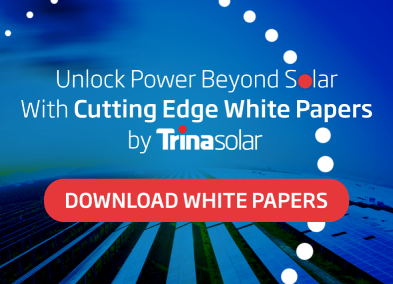What Should New Investors Know About Identifying a Good Solar Project Partner?
- 22/03/31
- Business of Solar
The transition to net-zero carbon pollution is now fully underway, making renewables a compelling investment proposition. Now, ambitious Environmental, Social, and Governance (ESG) goals announced by major companies and institutions are forcing investors to migrate from traditional fossil fuels to renewable energy investments, such as solar.
Sixty-five percent of respondents to Investcorp’s Global Investors Trends Survey 2021 cited the impact of climate change as their third-most influential investment trend on the global economy. Respondents noted that they are targeting climate change strategies in the public and private markets, and they expect the impact of climate change to be significant over the next two decades.
However, market history tells us that this strong desire in the capital market to move into or expand positions in renewable energy does come with risks.
Let’s examine what investors new to renewables should look for in a solar project partner to reduce risks and maximize returns.
C&I vs. Utility-Scale: Which to choose?
Both utility-scale and commercial and industrial (C&I) solar offer great opportunities for new investors, each with its own opportunities and risks.
At 10 MW or under, C&I solar projects are much smaller compared to 50 MW+ utility-scale solar installations. This can make C&I projects less complicated and more manageable for investors who don’t have experience in this space. The smaller project sizes allow investors to deploy less upfront capital and still obtain outsized returns with an acceptable amount of risk. At the same time, it’s also possible to aggregate these smaller investments across a number of C&I opportunities.

8.3 MW C&I project in Malaysia
C&I solar sites also provide a greater variety of options to choose from. A C&I project finds the offtaker customer that’s interested in it, and sells them the service of solar energy, whether that’s on-site rooftop or ground-mounted systems, off-site installations, community solar farms or via Power Purchase Agreements (PPAs).
For investors with more capital to deploy or a minimum on the amount of capital invested, utility-scale projects can be the best option. As larger assets, utility-scale projects offer the possibility for great returns with fewer investments to manage in a portfolio.

50.1 MW utility-scale project in Vietnam
Regardless of the project scale, investors will need a solar partner that helps them mitigate risk exposure and deliver project value.
Identify bankable partners with good market position and strong technology
Investors should identify solar original equipment manufacturers (OEMs) with a history of bankability. A long record of bankability indicates that lenders believe the manufacturer will both remain profitable and have the capacity to remain operational for the foreseeable future.
Investors should also look for manufacturers with a lasting footprint in their markets and a track record of technological innovation. That combination allows companies to amass the experience that yields industry insight -- which in turn allows the companies to mitigate risk exposure during installation and commissioning.
Bankable companies are experienced, and experienced companies can better avoid delays, budget overruns and lost revenue. Since the project’s ROI depends highly on the system operating to the full forecast of its asset life, investors need to find OEMs with highly reliable, bankable solutions, backed by warranties.
Additionally, investors, especially those new to solar, should identify partners that are active in the market to increase the chances for investment opportunities. Partners active in the market can provide more access to actionable projects, and our long-standing industry relationships allow us to introduce investors to proprietary opportunities not being widely shopped to investors.
Look for a history of solid project risk management
Whether it’s a C&I or a utility-scale solar project, each type comes with its own unique set of risks. In addition to identifying solar partners with market insights and project opportunities, it’s also crucial that investors find solar partners with a history of solid project risk management to mitigate risk exposure.
From project evaluation to capital structuring, Trina Solar, with its Utility Solutions and C&I Solutions, ticks all these boxes. Trina provides a wide range of value-added benefits for investors, including:
- Project evaluation/screening: Trina works closely with investors to screen projects, determine its feasibility and highlight potential areas of risk. Our team brings decades of experience to this process and can help investors focus their time and resources on projects with a higher likelihood of success, which can help reduce broken deal costs.
-
Improve project returns: Even though each investor will have their own unique capabilities, comfort zones and capital amounts to deploy, Trina offers a range of solutions to assist with deals of all sizes and help boost returns.
- Trina Solar’s C&I Solutions help reduce and manage project execution risks. This one-stop shop, smart solar solution streamlines procurement, optimizes component interoperability and boosts energy gains.
- Trina Solar helps lower the levelized cost of energy (LCOE) with proven PV system performance and highly reliable modules.
- As a Tier 1 supplier with strong relationships with debt and equity capital providers, Trina works with investors to optimize the project capital structure and ensure it is the best fit possible for investors to improve returns.
This covers just a sample of what makes Trina Solar a smart choice for investors searching for the right solar project partner.
Want to learn more? Reach out to the solar experts at Trina Solar today.
Relevant Topics
Smart Energy Solutions
delivered straight to your inbox


